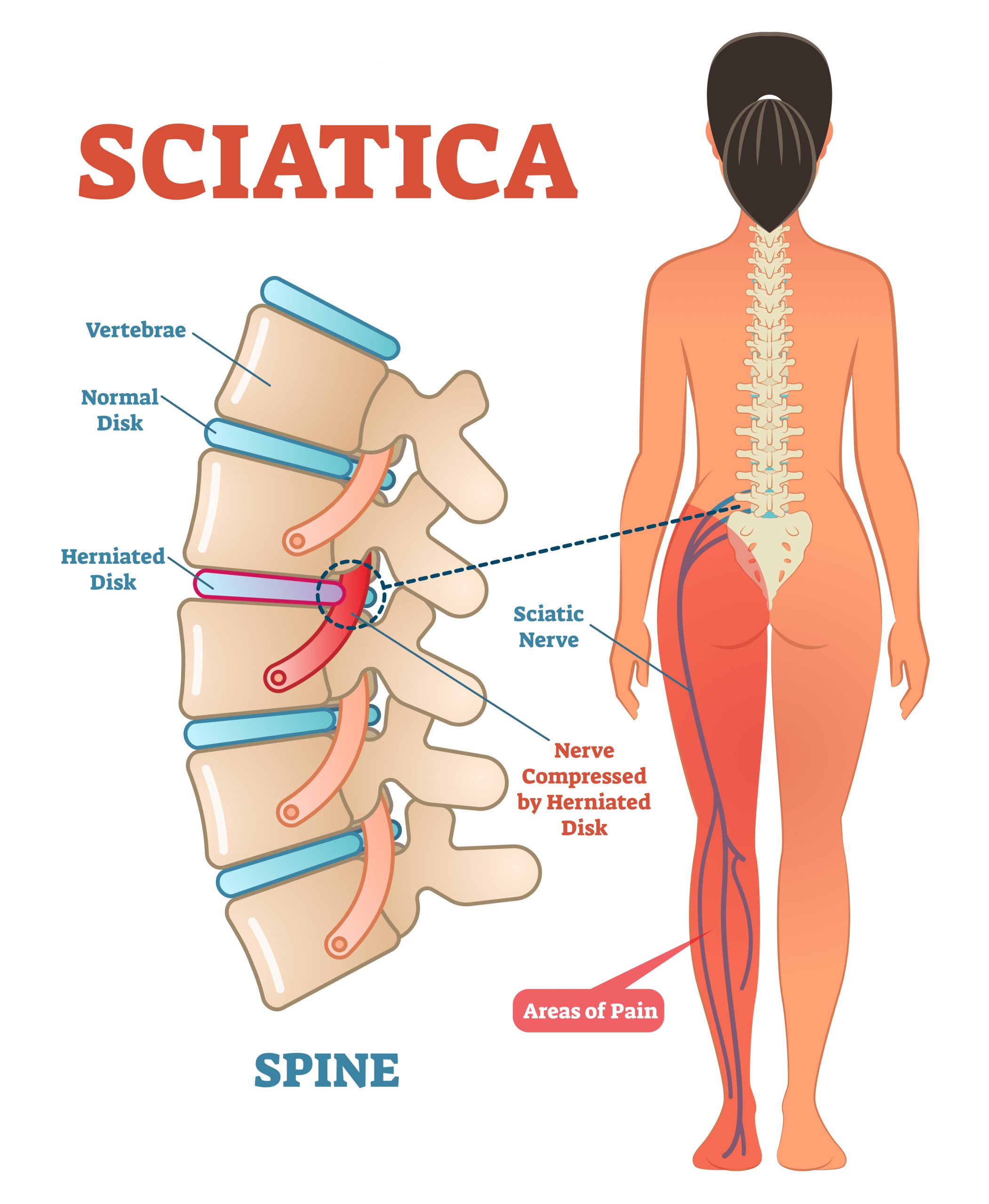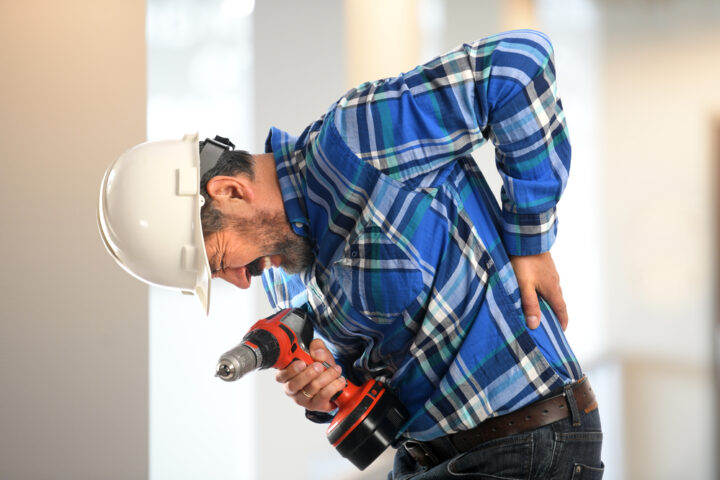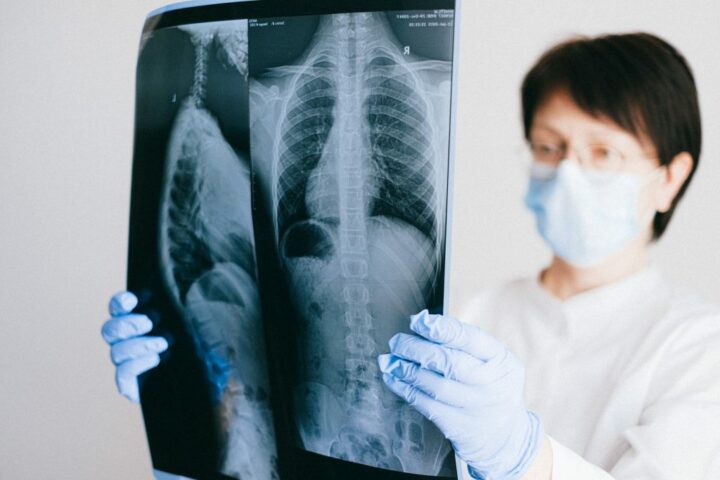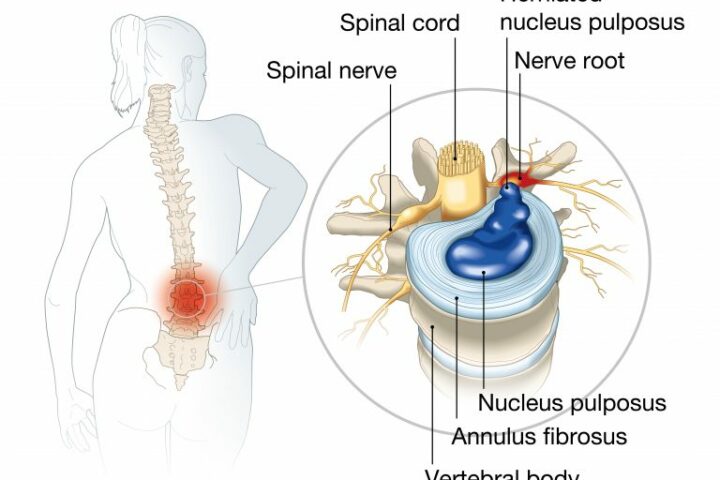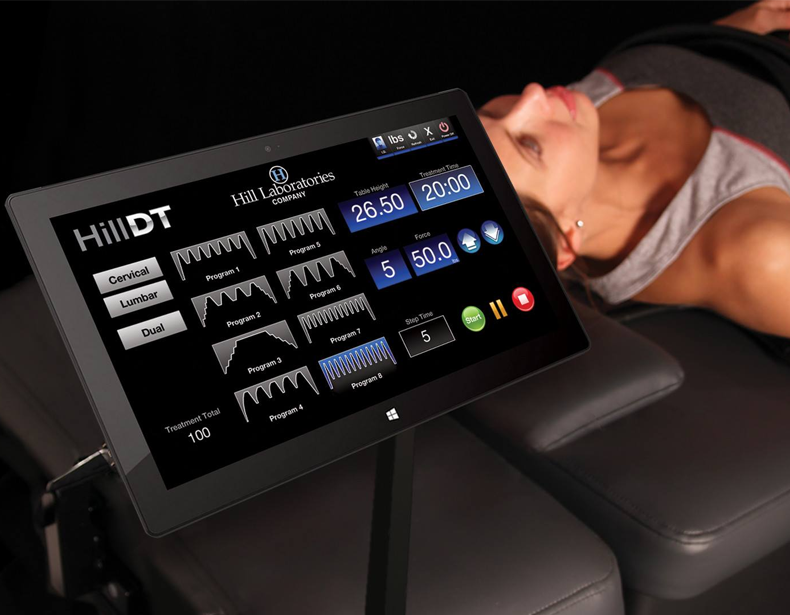Sciatic pain is caused by a lumbar disc issue where the disc is compressed, causing pressure on the sciatic nerve.
Sciatic pain is usually worse than lower back pain. It can be searing, sharp, stabbing, electric and quite excruciating. It is nerve pain which is possibly the worst pain to cope with.
Until you get the pressure off the sciatic nerve, you are not going to get relief, but there are some things you can do (or not do) to help.
It is most important that you get a professional diagnosis of your conditions before taking any advice on how to alleviate your symptoms.
Avoid sitting for long periods of time. Stand up at least every 15 minutes.
What is good for some, of course, is not always good for others. Usually sitting will cause more sciatic pain but sometimes standing will cause pain also. You should listen to your body and change what you are doing at least every 15 – 20 minutes.
Tips:
- Waiting in a line – get someone else to do it or find another way.
- Sitting in a doctor’s waiting room – get up and wander around or stand near your chair doing some simple movements.
- Don’t sit talking on the phone, it’s probably a mobile, so get mobile yourself.
- In a meeting, sit up the back so you won’t be noticed by anyone other than the presenter when you get up occasionally – or if the meeting is a small team, tell everyone that it is healthy to stand up every 15 minutes for good circulation.
- Get a sitting/standing desk
- In the cinema or restaurant choose a seat which is not in the middle of the room but rather at the side. Preferably at the back near a wall. That way you can stand up at any time without bothering anyone or drawing attention to yourself.
Choose a good chair
Don’t sit in a chair that allows you to sink into it so that your knees are above your hips. Choose an upright solid chair.
Tips:
- Raise your buttocks on something, or adjust your chair height, so your knees are level, or slightly lower, than your hips – not higher.
- Make sure you have back support in an upright position.
- Don’t lose your chair in a public place by leaving it, just stand to the side, in front or behind, and do some movements so you can sit back down when you need to.
- Keep your feet flat on the floor and don’t cross your legs. Once you get uncomfortable and fidgety, this is when you should stand up and move around for a few minutes.
Avoid staying in bed.
Whilst you are in acute pain it is difficult not to think that lying down will help. In the beginning, or when the pain is unbearable, it may be all you can do. Staying in this position won’t help though. Your body will just get stiff and seize up.
Tips:
- After you have had some rest, it may be better to take some short-term pain medications, to allow you to get out of bed and get moving.
- Simple walking around or standing and gently raising your arms above your head to stretch your back may be good.
- Walking in chest high water in a pool (especially a warm pool). The water will decompress your spine whilst allowing you to get some gentle movement.
- In the pool don’t try to lean forward and pull the water back with your arms.
- To strengthen your tummy and back muscles (your core) whilst in the pool, try to keep your hands beside you, your back straight and just walk comfortably.
Don’t bend forward if it causes pain
Some people will feel better when bending forward and others when bending back. Only do the action that feels best for you.
Tips:
- If you must bend forward do so from the hips keeping your back straight
- Rather than reaching for something walk up closer to it so you don’t have to bend
- Turn your whole body around rather than twisting
- Use long tongs if you need to retrieve something without bending
- Move objects so you no longer need to bend e.g.
- Use a small day garbage bin on the kitchen bench rather than continually leaning to put items in the rubbish bin
- Store items you use regularly (e.g. glasses) in a higher cupboard and items you use less in the lower cupboards
- Wear shoes that don’t need laces, Velcro or clips to be done up
- Put everything you use regularly on your office desk rather than in the lower draws
Don’t lift heavy objects – or do so correctly
Whilst you have sciatic pain it is best not to lift things, especially:
- Heavy items
- Objects which are far away from your body
- Items which are on the ground
The action of bending forward can cause aggravation and pain but adding weight to that, could cause more damage.
Tips:
- Bend your knees, keeping your back posture straight, if you must lift something from a lower level
- Use your leg muscles to get upright again and not your back
- Keep any items close to you so you don’t have to reach for them
- Turn your whole body around, don’t twist
Choose your car wisely and don’t stay in it for too long
Choose a chair that you can sit up in rather than sit down in.
Staying in the car as little as possible. Your spine wants to move, and any static position is not going to allow natural movement.
Tips:
- Check the position of your knees to your hips and change something to get your knees level or slightly lower than your hips.
- Stop regularly and go for a short walk.
- Keep up your hydration with good clean water.
- Sit up straight as you adjust the rear view and side mirrors to suit this position. Then when you slouch down you’ll be aware and it will make you adjust your posture for a better view.
- Try where possible not to have to turn around to look out the back window. Park somewhere forward entering and where you can use your mirrors to leave.
- Take public transport instead. A long drive could be replaced with a train ride and then hire a car when you get there or use taxis. On the train you can stand up and walk around whenever you need to. You can also de stress by reading a book or practicing some meditation.
Relieve the pressure on the disc which is causing the sciatic nerve to be impinged/irritated
The best way to do this is with gently stretching apart of the vertebrae on either side of the problematic disc. This will take the pressure off the disc and allow it to move away from the sciatic nerve. It will also release the nerve if it is inhibited in any way. Non Surgical Spinal Decompression can do this in a very gentle and non-invasive way. Without drugs and without any downtime from your usual activities. There is no risk of infection and no recovery time. It is a worthwhile treatment if you have tried everything else and are considering surgery.
For more information on Non Surgical Spinal Decompression
Remember, it is most important that you get a health professional diagnosis of your conditions before taking any advice on how to alleviate your symptoms.

